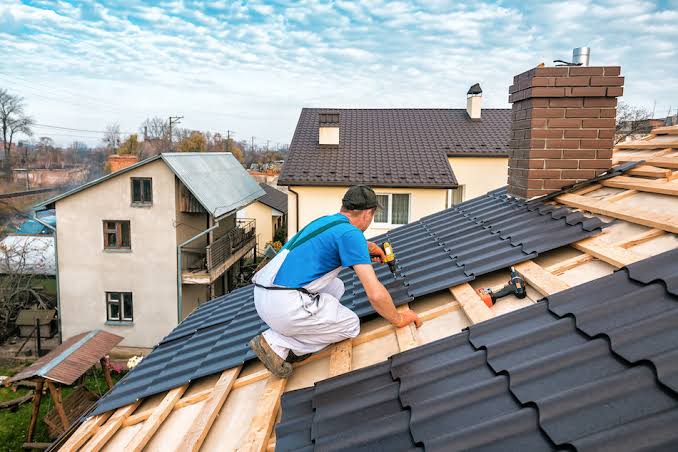How to Choose the Right Roofing Material for Your Home

Key Takeaways
- Understand the factors influencing your choice of roofing materials.
- Learn about the pros and cons of different roofing materials.
- Discover tips on maintaining various roofing options for increased longevity.
Introduction to Roofing Materials
Choosing the right roofing material is crucial for the durability and aesthetic of your home. Not all roofing materials are created equal, and each has unique characteristics that make it suitable for different types of homes and climates. For those considering professional installation, opting for Certified Roofing Contractors ensures quality workmanship and peace of mind. With various options available, it’s vital to understand the advantages and cons of each to make a wise decision that’s tailored to your specific needs and circumstances.
Factors to Consider When Choosing Roofing Materials
Several factors should be considered when selecting roofing materials to ensure longevity and efficiency. You can opt for something that fits your budget, lifestyle, and house with the aid of these considerations. The weather patterns in your area can significantly impact your roofing choice. For example, asphalt shingles might be suitable for areas with moderate conditions, whereas metal roofing is ideal for regions with extreme weather.
- Climate: Different materials perform better under specific weather conditions. For instance, asphalt shingles might be suitable for areas with moderate conditions, whereas metal roofing is ideal for regions with extreme weather. According to WebMD, understanding local weather patterns helps in choosing roofing that stands up to the elements.
- Cost: Budget constraints often play a crucial role in selecting a roofing material. While some materials may have a higher upfront cost, they can offer long-term savings by requiring less maintenance and lasting longer.
- Aesthetic Appeal: Your home’s exterior can be improved by the color and texture of the roofing material, which complements the surrounding architecture and landscape. It’s important to choose a material that not only provides protection but also boosts your home’s curb appeal.
- Durability: Ensuring that the material is long-lasting and resistant to wear and tear is essential for minimizing future repair costs. Durable materials can withstand severe weather conditions and other environmental factors, providing better protection for your home.
- Maintenance: Compared to other materials, some need greater maintenance. Ensuring routine maintenance will help your roof last longer. For instance, HomeAdvisor provides expert tips on maintaining various types of roofs, ensuring they remain in good condition and perform effectively over time.
Popular Roofing Materials and Their Benefits
Asphalt Shingles
Because they are inexpensive and easy to install, asphalt shingles are a popular option. They can be used with a range of architectural designs because they come in an assortment of colors and styles. These shingles are made of a fiberglass base mat coated with asphalt and mineral granules, offering decent durability and water resistance. Nevertheless, their longevity is comparatively lower than that of other materials, and they could be vulnerable to harm under extreme weather conditions, especially during strong winds or storms.
Metal Roofing
Metal roofing has a reputation for being long-lasting and sturdy. Because they are recyclable and can resist severe weather, metal roofs—which are made of materials like copper, steel, or aluminum—are frequently regarded as environmentally beneficial choices. Furthermore, metal roofing can reflect solar heat, reducing summer cooling costs and making it an energy-efficient choice. For many homeowners, the long-term advantages and low maintenance requirements make it a good investment, despite the often greater initial cost.
Clay Tiles
Clay tiles offer a timeless look and are highly durable, especially in hot climates, where they can help keep homes cooler by reflecting sunlight. These tiles are resistant to rot, fire, and insects, making them a long-lasting option with a distinctive aesthetic. They do, however, need a reinforced roof structure to withstand their weight because they can be costly and heavy. Their endurance and minimal maintenance requirements make them an appealing choice for many, even with their increased cost and installation difficulty.
Slate Roofing
Slate roofing is admired for its natural appearance and durability. This premium choice is made from natural stone and can last for decades, often outlasting the building itself. Slate roofs are incredibly resilient against severe weather, fire-resistant, and environmentally friendly as they can be easily recycled. However, slate is heavy and expensive, requiring a reinforced structure for support. The installation process is also more complex, necessitating skilled professionals to ensure proper installation. Despite these challenges, the unmatched beauty and endurance of the slate make it a coveted choice.
Maintaining Your Roof
Any type of roof can have its life extended with regular care. A proactive approach can also help identify and address issues before they become significant problems. Here are some tips to help you maintain your roof effectively:
- Inspect regularly for damage or wear, such as cracked or missing shingles, rust spots on metal roofs, or broken tiles. If wear and tear is identified early on, more severe damage can be avoided.
- Water buildup can result in leaks and water damage, so keep your gutters and downspouts clean. Water spilling over the gutter might harm the foundation or edge of the roof.
- Clear the roof’s surface of debris, such as branches and leaves, to stop moisture buildup and moss development. Debris can trap moisture, leading to roof rot and structural damage.
- For yearly inspections, engage a specialist to find possible problems that the untrained eye might miss. Professionals can also offer maintenance advice specific to your roofing material.
Conclusion
Selecting the best roofing material for your house requires taking into account a number of variables, including cost, maintenance requirements, durability, and aesthetic appeal. Selecting the material that best suits your home and lifestyle will be made easier if you are aware of its benefits and drawbacks. For comprehensive information on how different weather conditions can impact your roofing material, consider checking out the resources available at WebMD. Always keep in mind that a carefully chosen roof guarantees long-term security and peace of mind on top of improving the aesthetic of your house.



